Easily and deliciously season fish, crab, shrimp, and more with this low FODMAP seafood seasoning! Inspired by the classic Old Bay Seasoning marketed by McCormick, this low FODMAP version is similar (but not an exact copycat) in taste, quick to make in an electric spice grinder, and IBS-friendly. It's also naturally Paleo, Whole30, low carb, and Keto.
Please note: while low in FODMAPs, this recipe contains spicy ingredients. See 'Spicy Food Warning' below for further information.
Jump to:
What is Old Bay Seasoning?
As mentioned, Old Bay Seasoning is a seasoning mix commercially marketed by McCormick Company. According to Wikipedia, Old Bay Seasoning was originally created in the late 1930's by Baltimore Spice Company. It is named after a passenger ship called the "Old Bay Line" that traversed the Chesapeake Bay in the early 1900's.
Old Bay Seasoning was originally developed to be used on crab and shrimp but is used to season a variety of food items - from chicken to popcorn, to potato salad, and more. McCormick now markets a few variations on the classic Old Bay Seasoning - hot and blackened - as well as products that feature Old Bay in their ingredients, such as cocktail sauce.
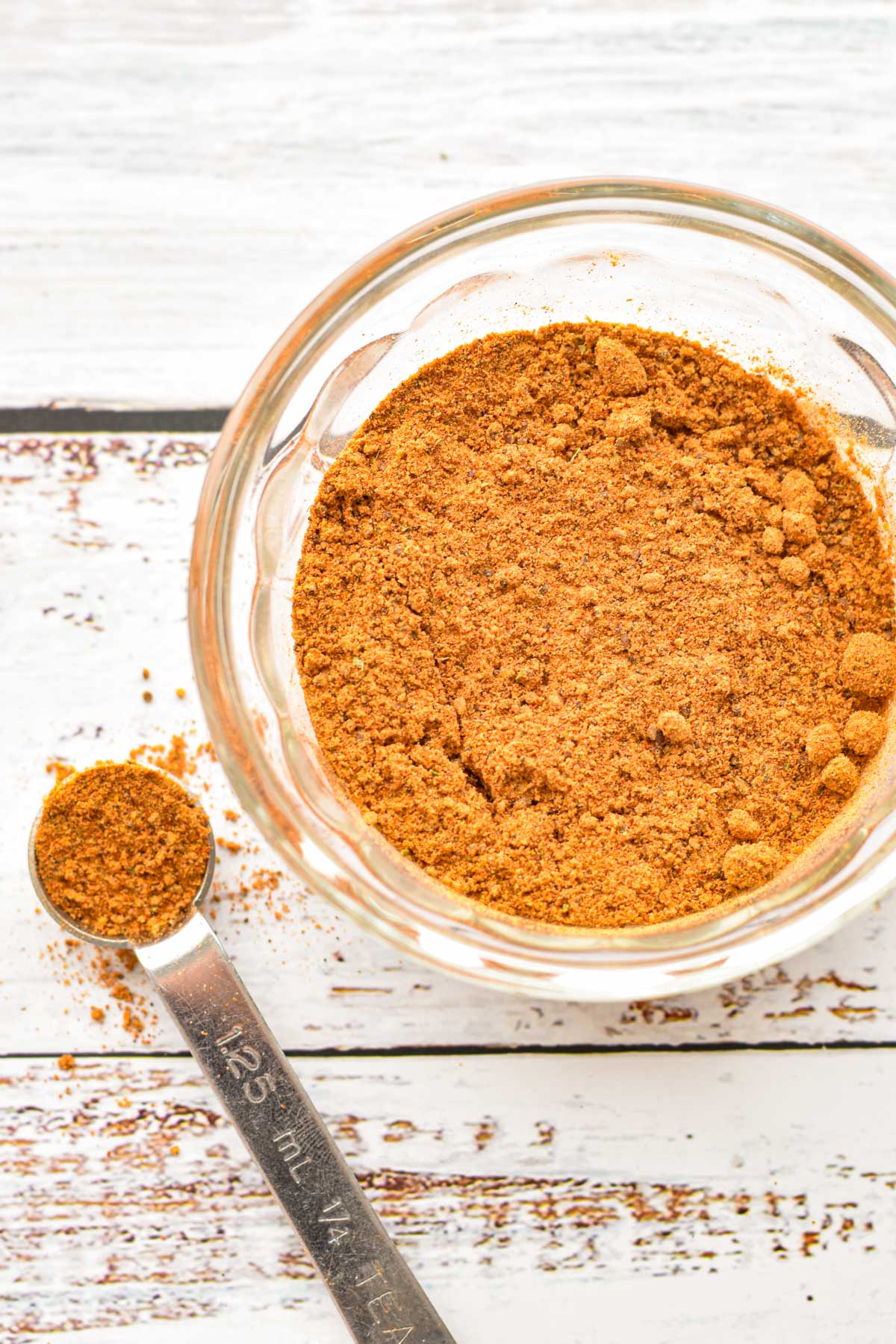
Is Old Bay Seasoning Low FODMAP?
The answer to this is unfortunately unclear. Old Bay Seasoning hasn't been tested for FODMAPs. It's most predominant ingredient is celery salt, which also hasn't been tested for FODMAPs. Celery (the vegetable) has been tested for FODMAPs by Monash University. According to their low FODMAP Diet App, celery can be consumed by most people with IBS in small quantities of 10 grams (about ¼ of a stalk) per serving. Personally, this information makes me wary of celery salt from a FODMAP perspective and leads me to avoid it. Unfortunately, that also makes me tend to avoid using commercially produced Old Bay Seasoning.
Additionally, McCormick doesn't publicly disclose every single ingredient that Old Bay contains. The Old Bay website only lists the following ingredients of its classic Old Bay Seasoning as "Celery Salt (Salt, Celery Seed), Spices (Including Red Pepper and Black Pepper), and Paprika." When it comes to low FODMAP cooking, "Spices" listed as an ingredient on anything is a big red flag as it could contain high FODMAP ingredients. Other ingredients of the original Old Bay, as listed in the Baltimore Museum of Industry, include mustard, cardamom, cloves, ginger, and laurel leaves (a.k.a. bay leaves).
While I haven't personally approached McCormick to ask what ingredients "Spices" contains, I thought I'd just develop my own Old Bay-inspired seasoning recipe. That way, I can be more certain the seasoning mixture includes only low FODMAP ingredients.
Spicy Food Warning
While this low FODMAP seafood seasoning isn't particularly spicy when put together and used on food, it does call for a high quantity of red pepper flakes. While thought to be low in FODMAPs, red pepper flakes can trigger additional symptoms for people with IBS. You could omit them, but doing that would take away a lot of the flavor that's true to the original Old Bay Seasoning.
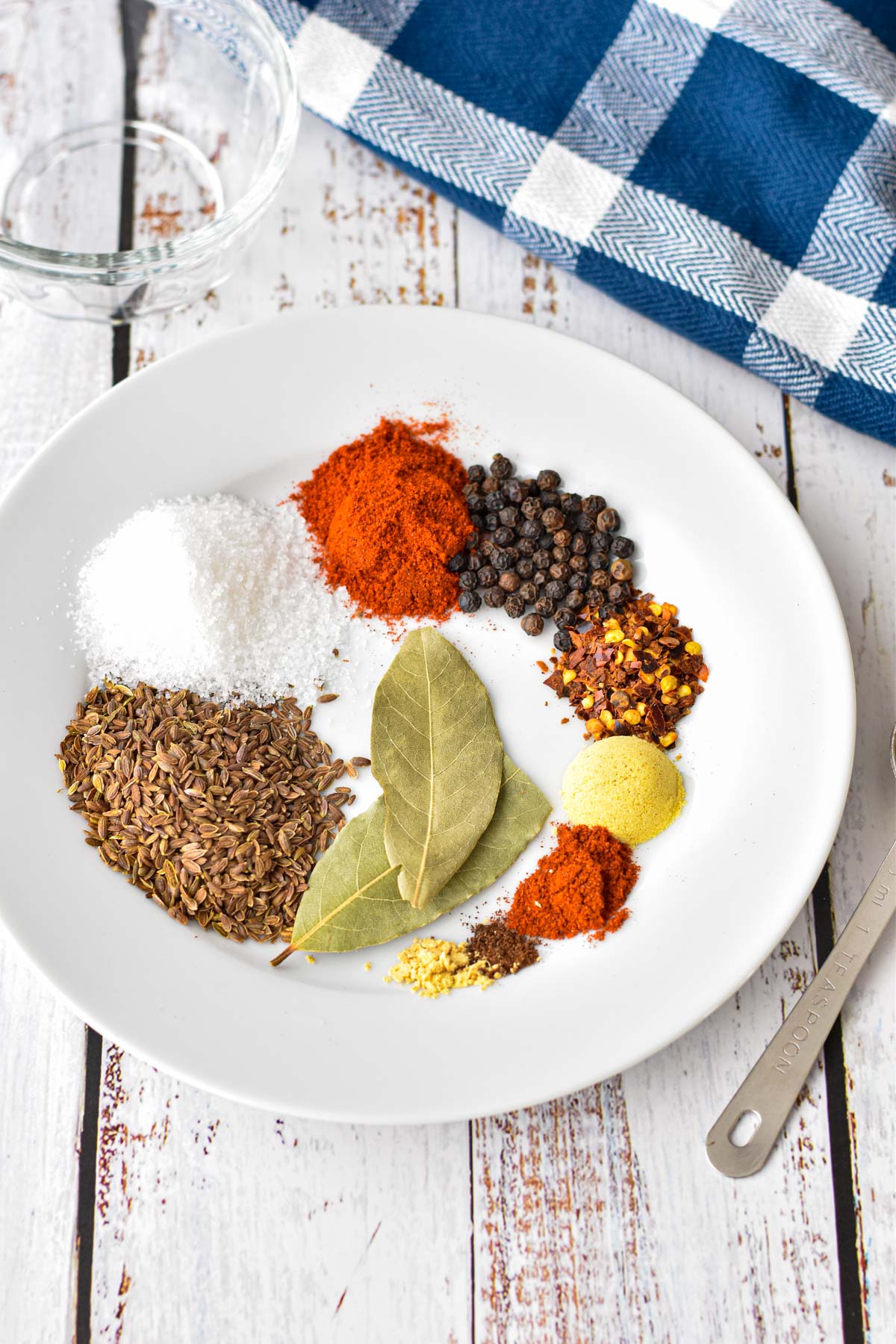
Necessary Equipment
This Old Bay-inspired low FODMAP seafood seasoning recipe requires the use of an electric spice grinder. I own an inexpensive one I got off Amazon and use it a lot, mainly to make dried chive powder (read more about how to do that in my Low FODMAP Cajun Seasoning post). The full list of equipment I use to make this low FODMAP seafood seasoning includes:
- Electric spice grinder
- Measuring spoons
- Air-tight container, such as a glass jar
Low FODMAP Seafood Seasoning: Ingredients & Success Tips
Dill Seed
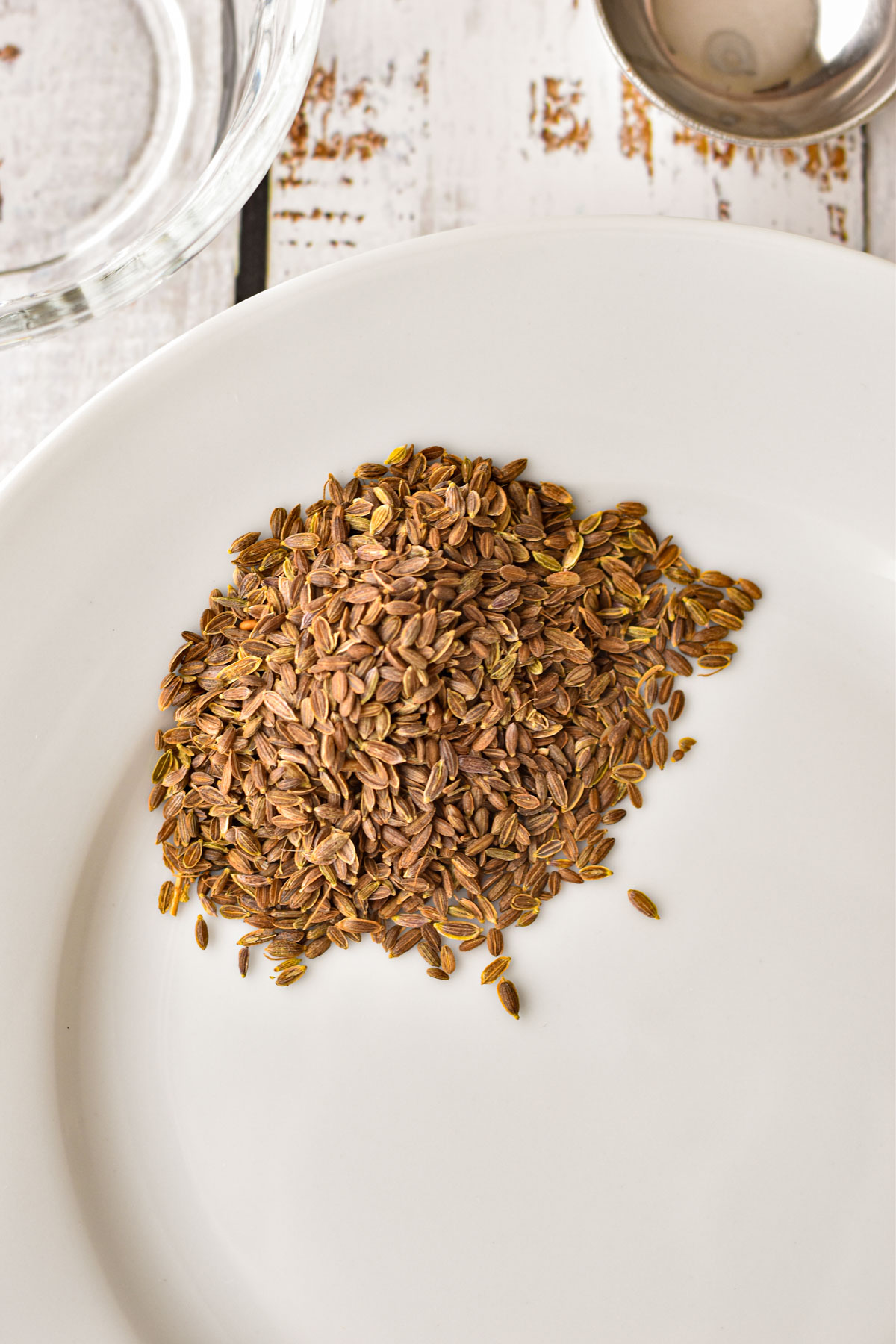
As alluded to briefly above, this low FODMAP seafood seasoning is similar in taste but not exactly the same as Old Bay Seasoning. This is because I do not use celery salt, the primary ingredient and predominant flavor of Old Bay, for the FODMAP reasons mentioned above. Instead, I use dill seed, which I grind into a powder with the electric spic grinder. Dill seed provides a complementary flavor to celery salt that goes extremely well with seafood. It is also used as a spice on its own in things like potato salad, braised cabbage, soups, meat marinades, homemade pickles, as a seasoning for fish, and more.
Is dill seed low FODMAP?
Dill seed has been tested for FODMAPs by Monash University, and according to their low FODMAP Diet App, is low FODMAP in quantities of up to 1 teaspoon or 2 grams per serving. We are adding 1 tablespoon of dill seed across twenty-four ¼-teaspoon servings.
Will dried dill weed work instead?
Dill seed is not the same as dried dill weed. Dried dill weed will not provide the same amount of flavor as dill seed and therefore will not work as a substitute for dill seed in this recipe.
Where can I find dill seed?
I had to look at multiple grocery stores locally to find one that sold dill seed as part of their spice aisle. Dill seed may be not as easy to find as other more common spices. Locally (in BC), I found it at Real Canadian Superstore. If you are unable to find it at a store near you, it can also be purchased on Amazon.
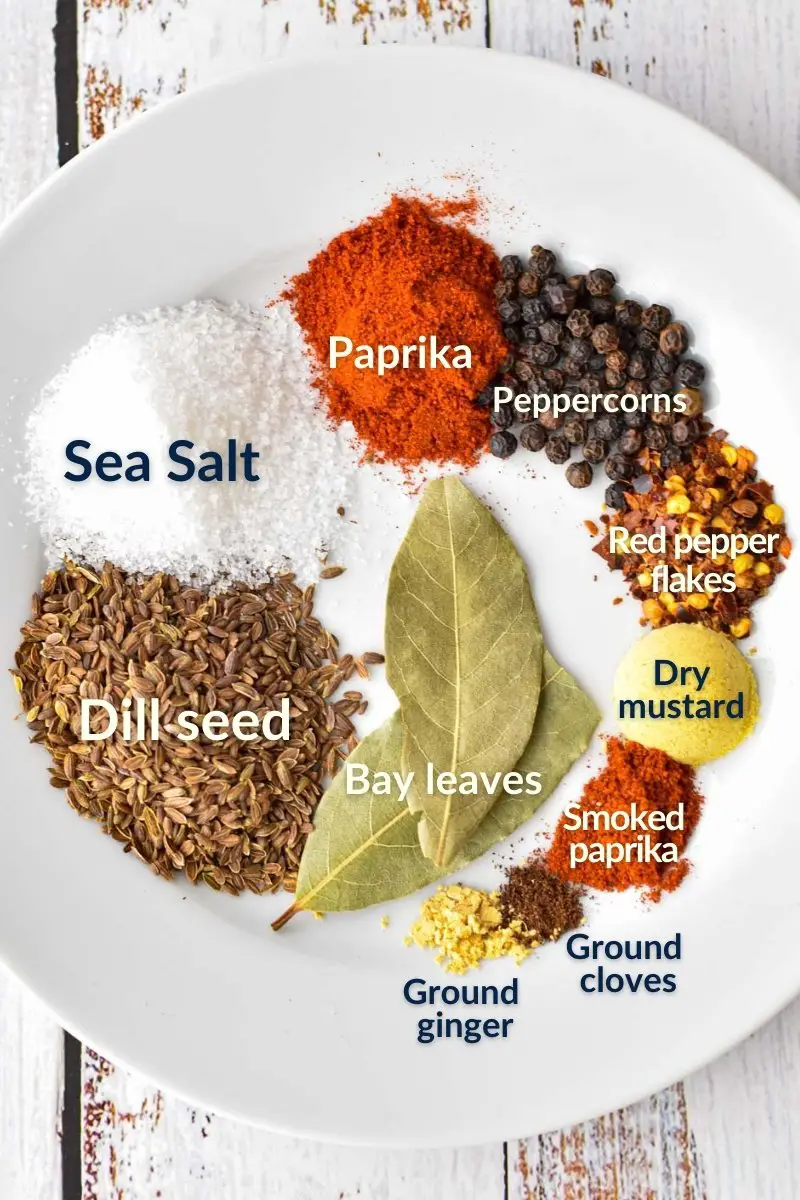
Other Herbs & Spices
In addition to dill seed, I add the following ingredients to my electric spice grinder:
- Sea salt
- Sweet paprika - a.k.a. regular paprika
- Whole black peppercorns - or the same quantity of ground black pepper
- Red pepper flakes - see my "spicy food warning" above. Recently tested for FODMAPs, they're listed in Monash University's Low FODMAP Diet App as chili flakes and low FODMAP in servings of up to 1 teaspoon or 2 grams per serving. We're only adding ½ teaspoon across 36 quarter teaspoon servings, so the potential for FODMAP stacking is minimal.
- Dry mustard - a.k.a. mustard powder. I also use this in my low FODMAP BBQ Sauce recipe.
- Smoked paprika
- Ground cloves - just a pinch as the cloves are super strong in flavor
- Ground ginger - same as the ground cloves
- Bay leaves - if your bay leaves are too large to fit, break them into smaller pieces using your hands.
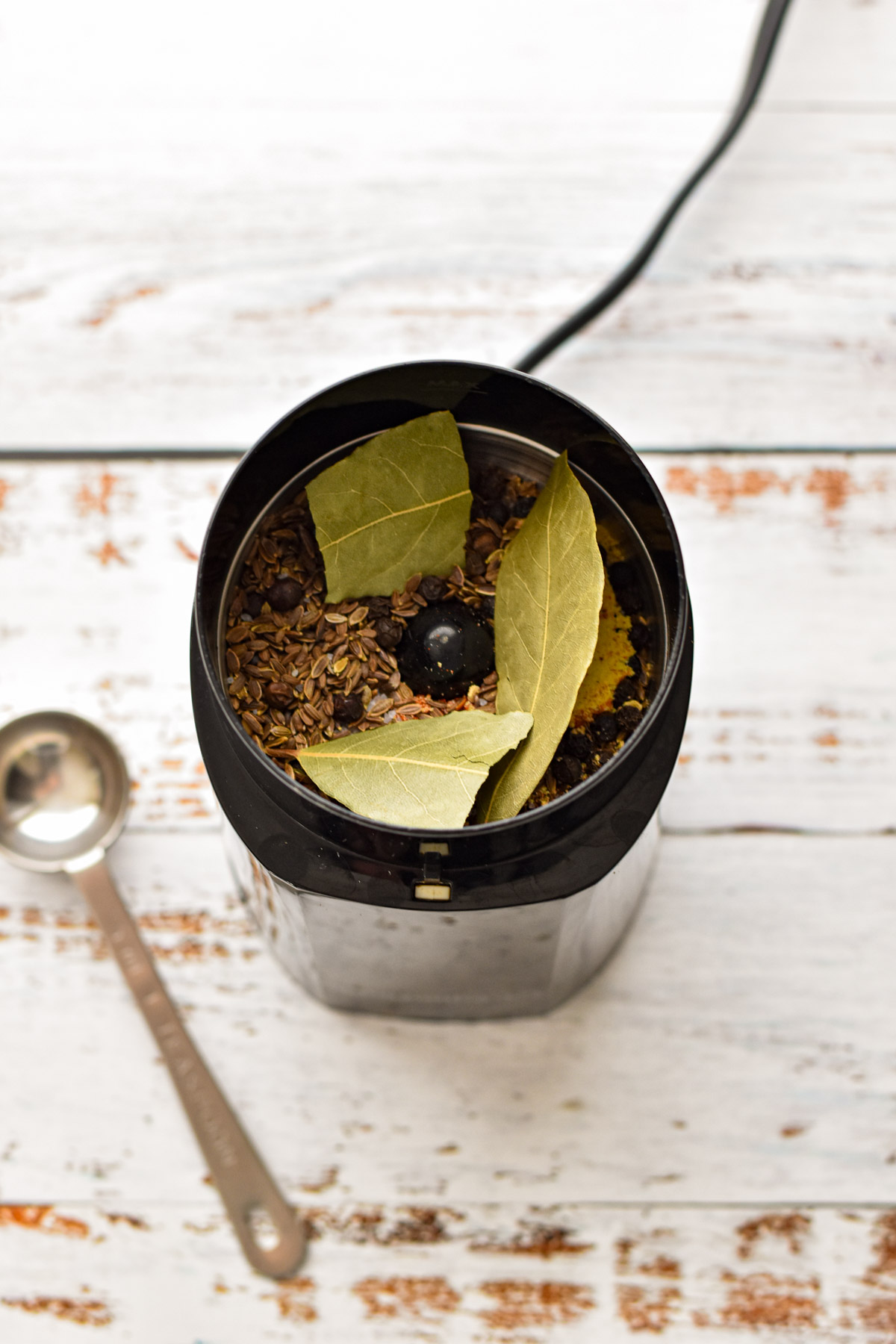
I grind the spices in 30 second increments until the mixture is a fine powder, shaking the spice grinder occasionally to bring down the spices that settle on the lid and the sides. The biggest challenge is to get the bay leaves to grind down. If you still have larger pieces of bay leaf in the mixture, keep grinding until they are super small.
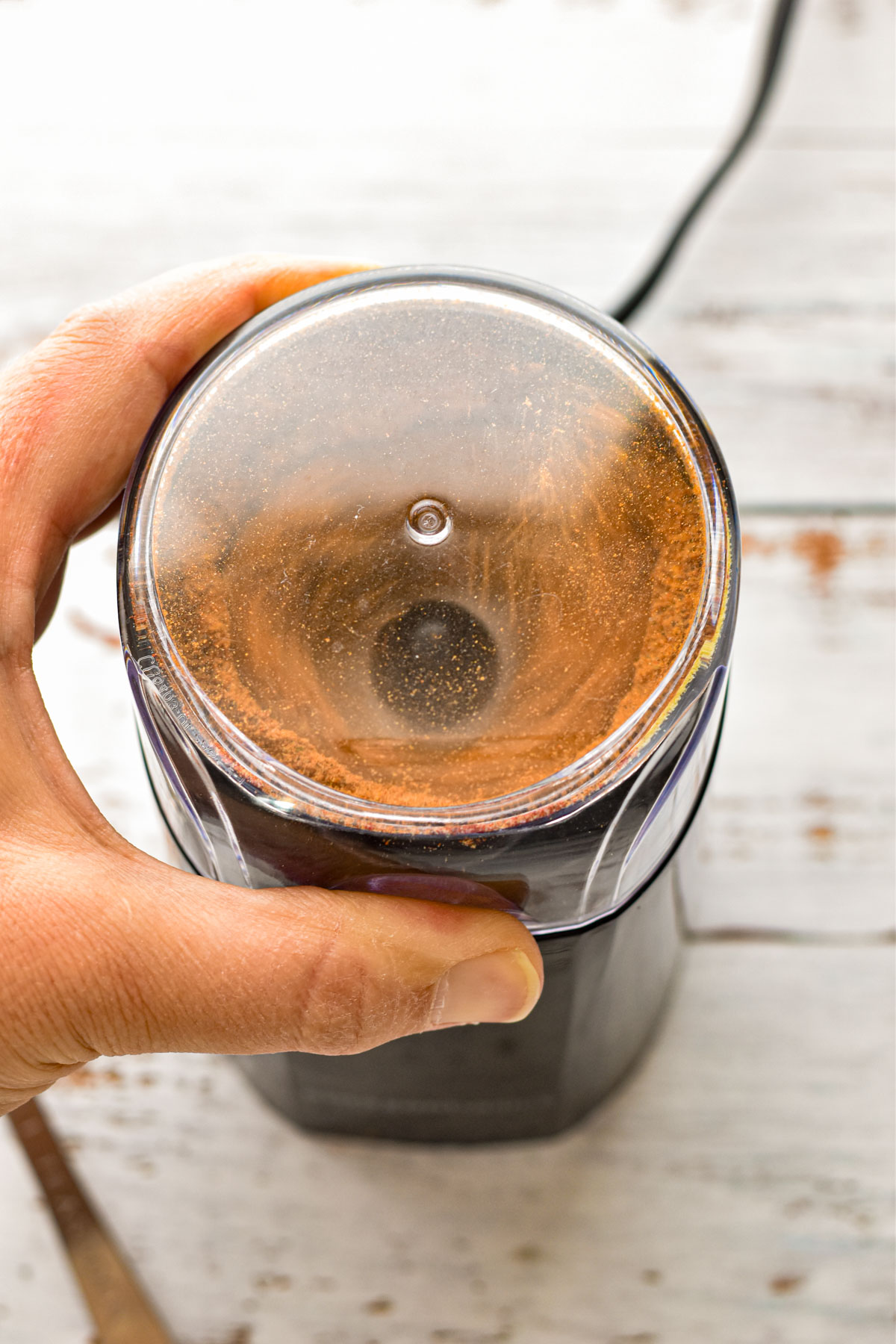
Once ground, I pour the low FODMAP seafood seasoning mixture into an airtight container, such as a small glass jar. It should stay fresh as long the spices in which it contains stay fresh.
What can I use this low FODMAP seafood seasoning for?
You can use this low FODMAP seafood seasoning to season fish, crab (like in my upcoming Low FODMAP Air Fryer Crab Cakes recipe), shrimp, or chicken. Although I haven't personally tried it, I have heard that people sometimes use Old Bay Seasoning on French fries, popcorn, hard boiled eggs, and more.
Print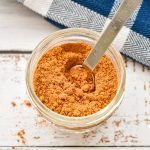
Low FODMAP Seafood Seasoning (Old Bay-Inspired)
- Total Time: 5 minutes
- Yield: 12 servings 1x
Description
Easily and deliciously season fish, crab, shrimp, and more with this low FODMAP seafood seasoning! Inspired by the classic Old Bay Seasoning marketed by McCormick, this low FODMAP version is similar in taste, quick to make in an electric spice grinder, and IBS-friendly. Naturally gluten-free, dairy-free, low carb, Keto, Paleo and Whole30 compliant.
Ingredients
- 1 tablespoon dill seed (not dried dill weed)
- 2 teaspoons sea salt
- 1 ¼ teaspoons paprika
- 1 teaspoon whole black peppercorns
- ½ teaspoon red pepper flakes*
- ½ teaspoon dry mustard
- ¼ teaspoon smoked paprika
- Pinch of ground cloves
- Pinch of ground ginger
- 2 dried bay leaves
Instructions
- Add all listed ingredients to an electric spice grinder, adding the bay leaves last and breaking them into large pieces with your hands the whole leaves don’t fit in the grinder. Grind at 30 second increments until evenly ground into powder, shaking the spice grinder occasionally to shake the spices from the roof and sides.
- Add to your favorite seafood dishes, like my upcoming Low FODMAP Air Fryer Crab Cakes.
- Store in an air-tight container, such as a glass jar.
Notes
- Red pepper flakes: Although red pepper flakes are low in FODMAPs in small quantities, some people respond poorly to them for reasons having nothing to do with FODMAPs. Pay attention to how your body reacts to spicy food and consult your doctor or dietitian before adding red pepper flakes to this recipe if you have concerns about how your body might react.
- Servings: Makes about 3 tablespoons total or twelve ¼ teaspoon servings.
- Prep Time: 5 minutes
- Category: Condiments and Seasoning Mixes
- Method: Electric spice grinder
- Cuisine: American


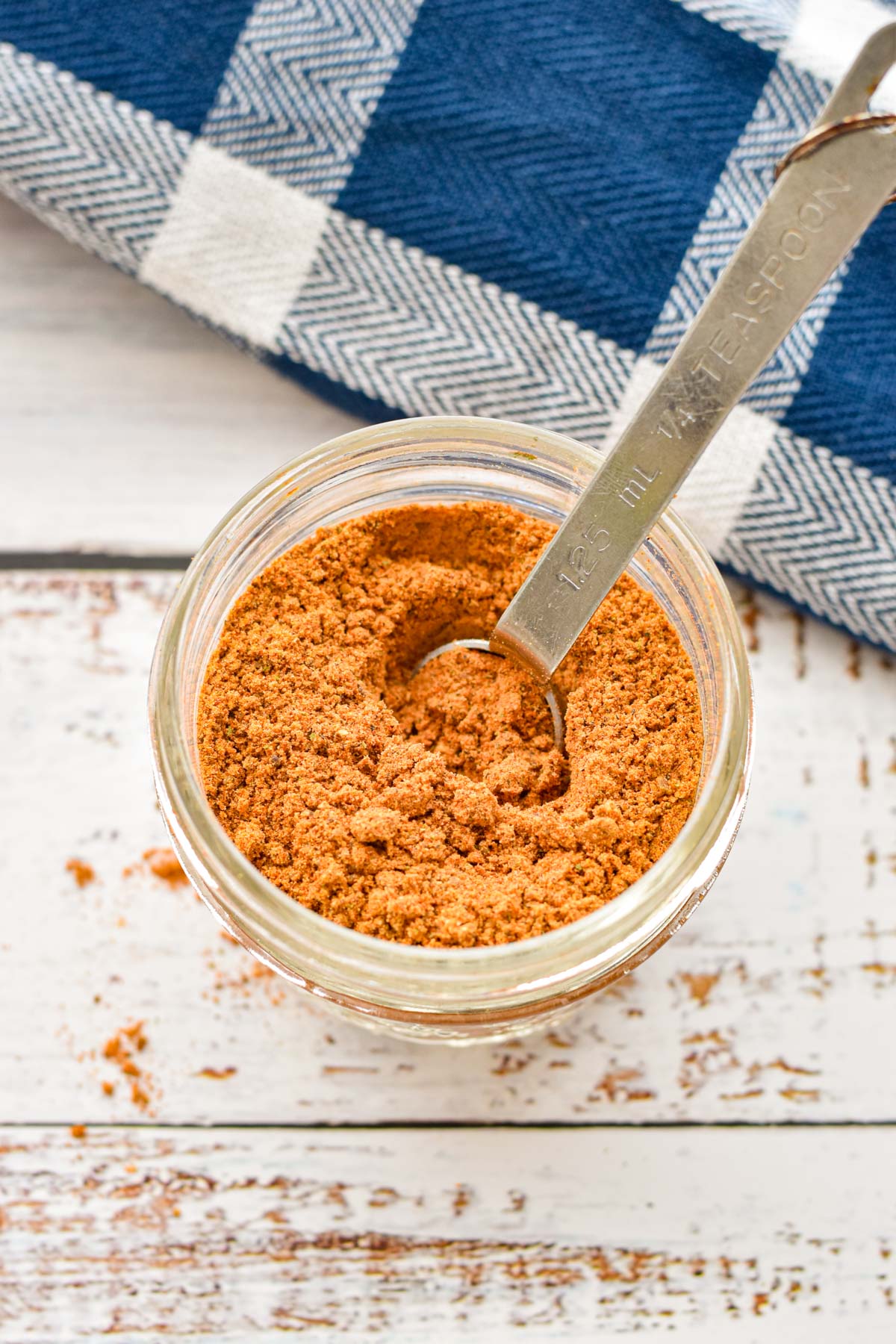



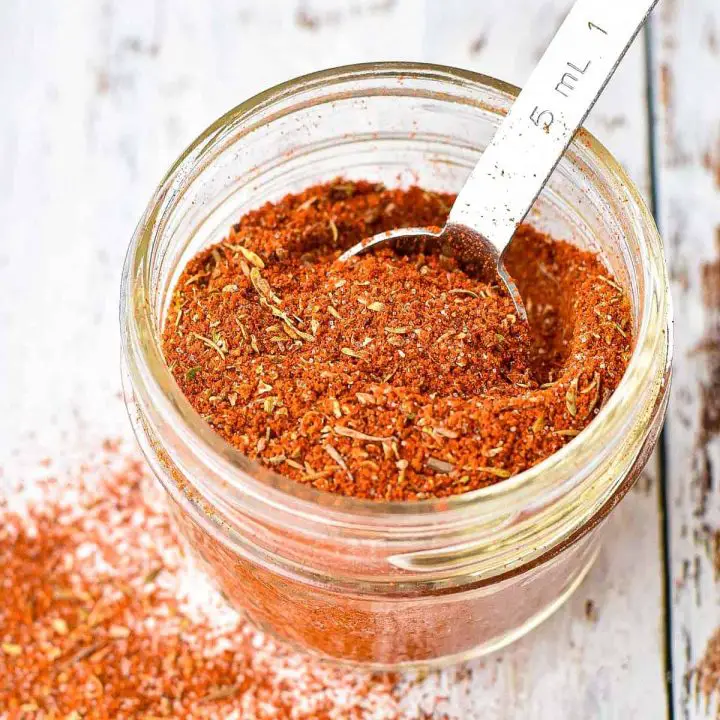
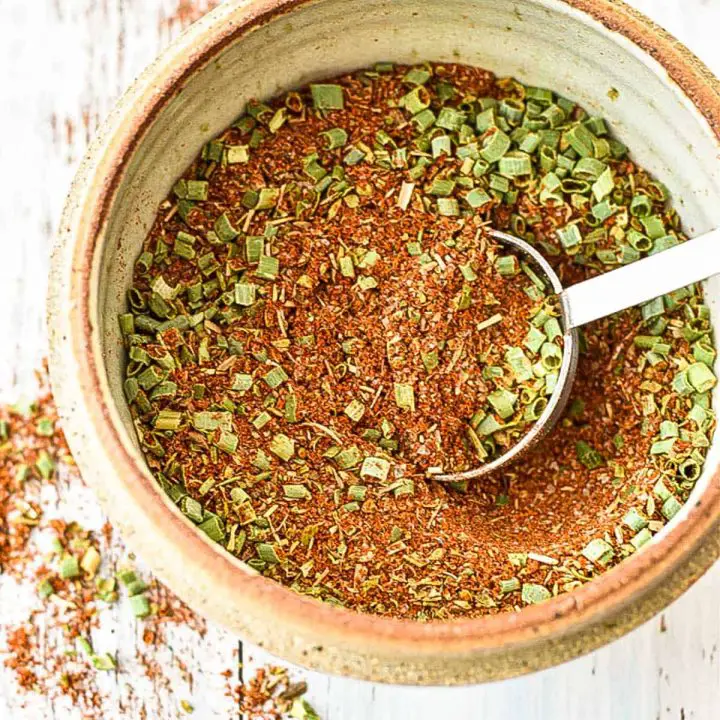
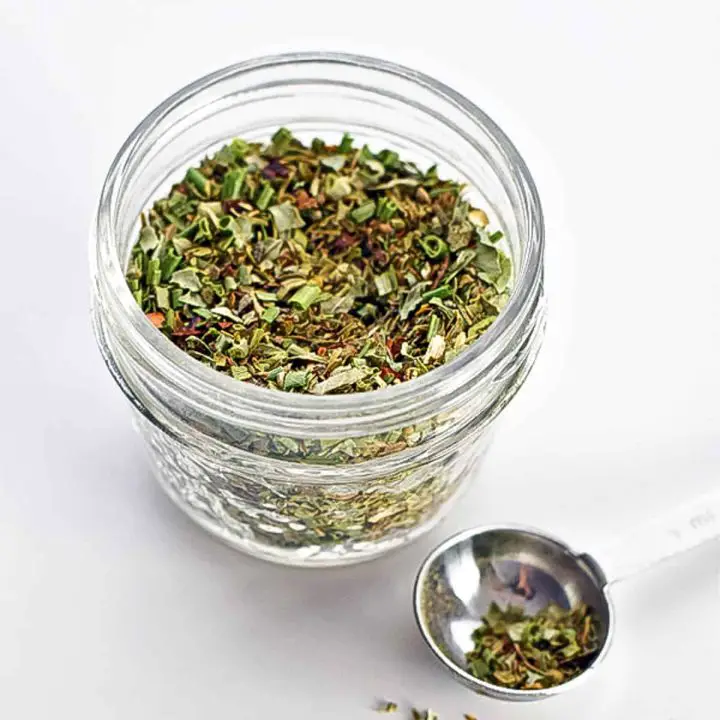
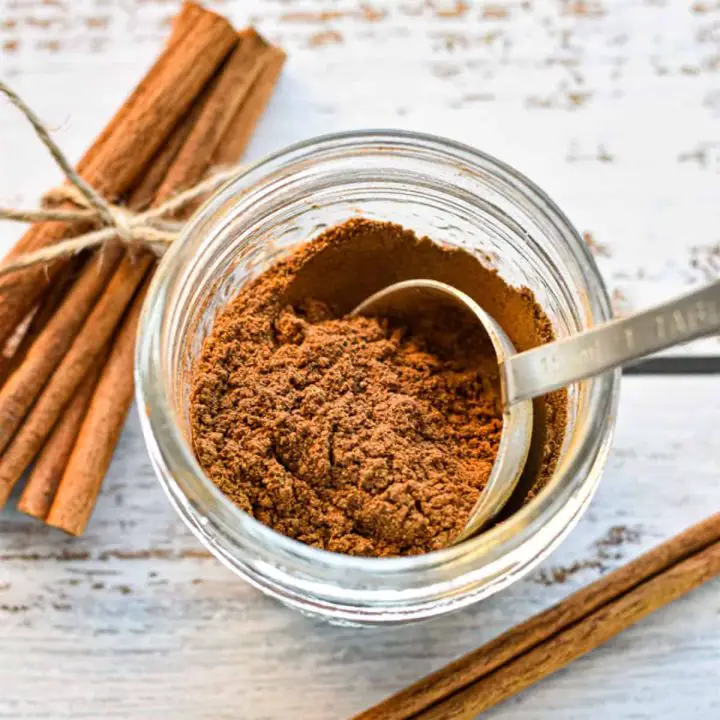
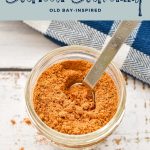

Leave a Reply